POETICS OF EMPTINESS



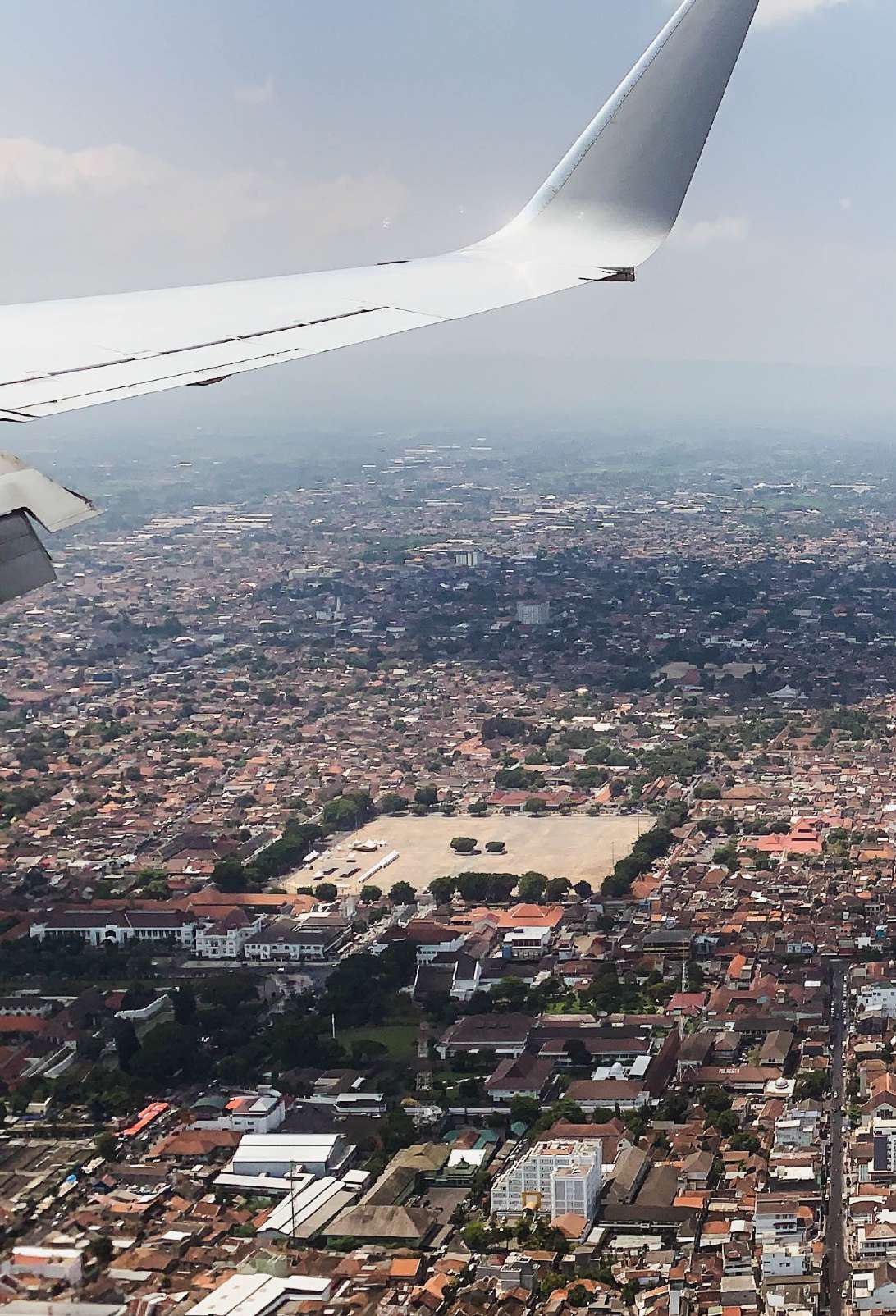 Image: Siti Nur Farah (2019)
Image: Siti Nur Farah (2019)
In the name of Allah,The Most Gracious,The Most Merciful.
All praises and thanks belong toAllah, God of the worlds. May Peace and salutations of Allah be on the leader of all leaders, the pride of all of creation, our Beloved Prophet Muhammad (Peace Be Upon Him) and on his family, companions and all those who follow in their footsteps in excellence.
This volume is the product of the study of three Indonesian cities located in Central Java – Semarang, Surakarta (Solo) and Yogyakarta.The location of these cities along the equatorial belt provides an opportunity for a conversation between the tropical climate and the architecture of the city. Through travel, photography, ground research and explorations of presentation techniques, the stories discovered allow for an opportunity to design a narrative that would eventually be translated into architecture and urbanism.The research compiled in this volume has been studied carefully and thoroughly before the translation process into architecture and urban form begins.
I would like to thank Associate Professor Erik L’Heureux for his guidance and knowledge from the day I first embarked on my thesis journey. I would also like to thank my mother for her continuous support, encouragement and prayers.
Finally, this thesis is dedicated to my late father whose love has been keeping me going through all the critical times during this period.
Contents
Abstract
Travelogue: Part I
Itinerary
Photographs
Javanese City Structure
Travelogue: Part II
Itinerary Photographs
Analysis
The Alun-Alun A Personal Experience Stories to Illustrations
Site Alun-Alun Kauman Semarang
Design Narrative Pasar Dirgahayu
Process & Strategies
Models
Work in Progress
Drawings
Reference Books
Colonial Maps
Old Photographs
Bibliography
 Image: Siti Nur Farah (2019)
Image: Siti Nur Farah (2019)
Indonesia’s rich history across the archipelago has given it a unique identity in every city and is mainly expressed through multiple layers. The different culture and philosophy across time can be identified from the different kingdoms and empire that once controlled the land.The various layers of history and narratives from different time periods has resulted in changing values and meanings of certain places. In particular, a prominent characteristic found in almost every city called the alun-alun has been around for many centuries.
Founded in the 13th Century, the alun-alun is an open field located in front of a royal palace or a government institution.The fundamental concept of this space is that it positions itself to have a mosque on theWest, a market on the East and a royal palace on the South. Hence, there are religious, economical and political symbols that govern this space.The positions also provided a clear North-South and EastWest axis that is linked to the concept of macrocosm and microcosm. In addition, one of its defining characteristics is the placement of two particular trees in the middle of the open square.The canopy of the trees tries to resemble the shape of an umbrella that symbolizes protection by the royals for the people. However, due to the harsh climate and lack of shading, the alun-alun is only used when people are waiting to meet the royals, resulting in an empty field on most days. Commoners will not use this space freely as they feel intimidated by being on the grounds owned by someone with higher power.As such, the alun-alun eventually becomes a symbol of power for the royals.
This thesis seeks to tap on the spatial quality of emptiness of the alun-alun as a means to eliminate the strong symbol of power. It strives to alter the symbolism that draws people away due to fear and intimidation, to a symbol that actually draws people closer to it.
Image: Siti Nur Farah (2019)Foreword
Abstract
Travelogue: Part I
Travelogue: Part II
The Alun-Alun
Site
Design Narrative
Process & Strategies
Work in Progress
Reference

 Image: Siti Nur Farah (2015)
Image: Siti Nur Farah (2015)
The thesis started off using a travel methodology. By picking a site within the equatorial atmosphere, it opened up various options in choosing the right focus that would ground the thesis over the two semesters.The geographical position of Java Island within a 2-hour flight from Singapore led the author to look into its different cities.The contrasting urban morphology of the cities in the archipelago and its rising population of 140 million was one of the reasons that compelled the author to embark on her research in the region. Reminiscing her visit toYogyakarta during her first year of architecture school to study the typologies of vernacular architecture, the author travelled back in time and found a topic interest that has since intrigued her. It became a drive in creating a research focus that felt close to home.
Before deciding on a particular city, the author looked at certain characteristics of Javanese cities to find some parallels between them. Her discovery of a type of square found in some cities that was similar in form as to what she had seen in Yogyakarta reaffirmed her interest in researching on that particular space. Alas, the choice of site was further narrowed to the coastal city of Semarang located on the Northern coast of Central Java.This travelogue aims to show the research findings and processes in a more visual manner to allow for easier understanding.
 Image: Siti Nur Farah (2019)
Image: Siti Nur Farah (2019)
Base Map: Erik’s Previous Masters Studio (17/18)
Edited by: Siti Nur Farah (2019)


 Image: Siti Nur Farah (2019)
Image: Siti Nur Farah (2019)

 Image: Siti Nur Farah (2019)
Image: Siti Nur Farah (2019)

 Image: Siti Nur Farah (2019)
Image: Siti Nur Farah (2019)
Javanese cities are structured based on a cosmological concept.The layout of the city follows an axis and a certain hierarchical order (Purwani, 2014).The spaces were structured in a carefully thought manner that ensures the harmony between the human beings (microcosm) and the universe (macrocosm).This resulted in the formation of an imaginary axis that guided the development of Javanese cities. In most cities, the development follows the order in the North-South direction. In addition, cities were always situated in between a mountain, which they perceive has a higher cosmic power, and the Southern sea, where waste is discharged.This concept then became a basic pattern in the urban morphology of Javanese cities.
There has been a lot of research done in this region which resulted in several debates and arguments regarding the theories that ground the fundamental concepts of the cities. However, the arguments can be broken down into two main theories – the essentialist and constructivist theory (Purwani, 2014).The former is a philosophical theory that focuses on the natural form and true existence. Early philosophers such as Plato was known for this ideology and had argued that every object or being has its ideal principle and that it is a given. He further explained the properties that are embedded in them – its essence and structure (Rosenkrantz & Hoffman, 2011). Based on this approach, there is an assumption that everything is unchanged through time (Bernard & Spencer, 2002). In order to understand this theory, the basic concept of Javanese cities can be looked into further. In an essence, a traditional Javanese city is made up of certain physical elements - a royal palace, a stone monument, a mosque, the alun-alun (an open square) and a market.These elements are placed in a certain order in relation to one another and are embedded with important meanings to the people.
To date, these elements still exist in Javanese cities and the values and meanings of the spaces have been kept unchanged over many centuries.The spatial composition of the palace and the alun-alun in Yogyakarta and Surakarta can still be seen today. In both cities, the alun-alun remained in its physical form, suggesting the importance of the space and its everlasting values.
On the other hand, the constructivist theory states that a city is built based on the relationship between a subject and an object.This theory opposes the nature of the essentialist theory. Subject in this case refers to the human being while the object refers to places, space and structure that are perceived by the human being. According to Hobsbawm and Ranger in their book called The Invention of Tradition, traditions can be constructed by human subjects and become official when they are claimed to have been continued from the past. This could possibly be the framework that allowed for such a long tradition of the way a Javanese city is structured.

The structure of a Javanese city is based on one fundamental concept called the Catur Gatra Tunggal. This concept embodies the unification of four elements into one which are the alun-alun, the mosque the royal palace and the market. Based on the concept, the alun-alun functions as a binding agent between the mosque, royal palace and the market (Susanti et. al, 2017). As it is openly located in the center surrounded by the remaining three elements, it not only acts as a public space but also as a supporting element to the things around it. Hence, the alun-alun should not be seen as a stand-alone object but rather a small segment of a bigger complex.
Hence, it is critical to note that there are different parts and segments of a city that forms a kind of totality. This means that certain aspects of the cities should not be seen as an individual component but rather it should be seen as whole as it better informs the way the city functions. Javanese cities are not made of individual fragments that are segregated from one another but rather the physical manifestations of the architecture in the city as well as the non-physical aspects of the city comes together to create narratives.The architecture of Javanese cities are closely related to one another as one does not function without the other.
As for the alun-alun of Javanese cities, this concept serve as a fundamental framework in order for one to understand the way the space functions.The alun-alun positions itself in the center of the city while unifying the different elements surrounding it. By learning this framework, it changes the way the alunalun is seen in the city.
Catur Gatra TunggalHierarchy of City Layout in Surakarta, Central Java
An Illustration




The drawings and collages depict the representation of the spatial experience of the alun-alun today and the context surrounding it. It shows a shift in function from history to present day. It is often associated with the idea of power and control, as it sits in front of the royal palace or government building. This challenges the depiction of the alun-alun as a public space. It raises certain questions regarding its degree of publicity to the public while taking on the position as a private space in the disguise of a public space.
Foreword
Abstract
Travelogue: Part I
Travelogue: Part II
The Alun-Alun
Site
Design Narrative
Process & Strategies
Work in Progress
Reference
The second travel series is a continuation from the first visit to Semarang. Instead of focusing on one city, the research has expanded to a larger scale in order to have a better understanding on the topic of Javanese alun-alun. It is a part of the research methodology for the thesis in order to learn the different fates and histories that fell to the spaces across different cities. It is critical to learn of these information as it gives a narrative to this peculiar space that exist in every city in Java. Hence, the author travelled to three main cities located in Central Java - Semarang, Surakarta (Solo) and Yogyakarta - from the 18th October to 25th October 2019.The main objective of travelling to those cities was to have a first-hand experience in seeing and observing the spaces.
Through travel, photography and filming of the alun-alun in all three cities, different stories were discovered and learned. The location of the cities were picked from the same region as it allows for parallels to be made in terms of context and geography. In addition, the city of Yogyakarta and Surakarta are the first two cities with the alun-alun model that lived from the ancient kingdoms which were then modelled by the Dutch to be formed in every city in Java. Hence, it served as a critical starting point for this thesis research process.
 Image: Siti Nur Farah (2019)
Image: Siti Nur Farah (2019)
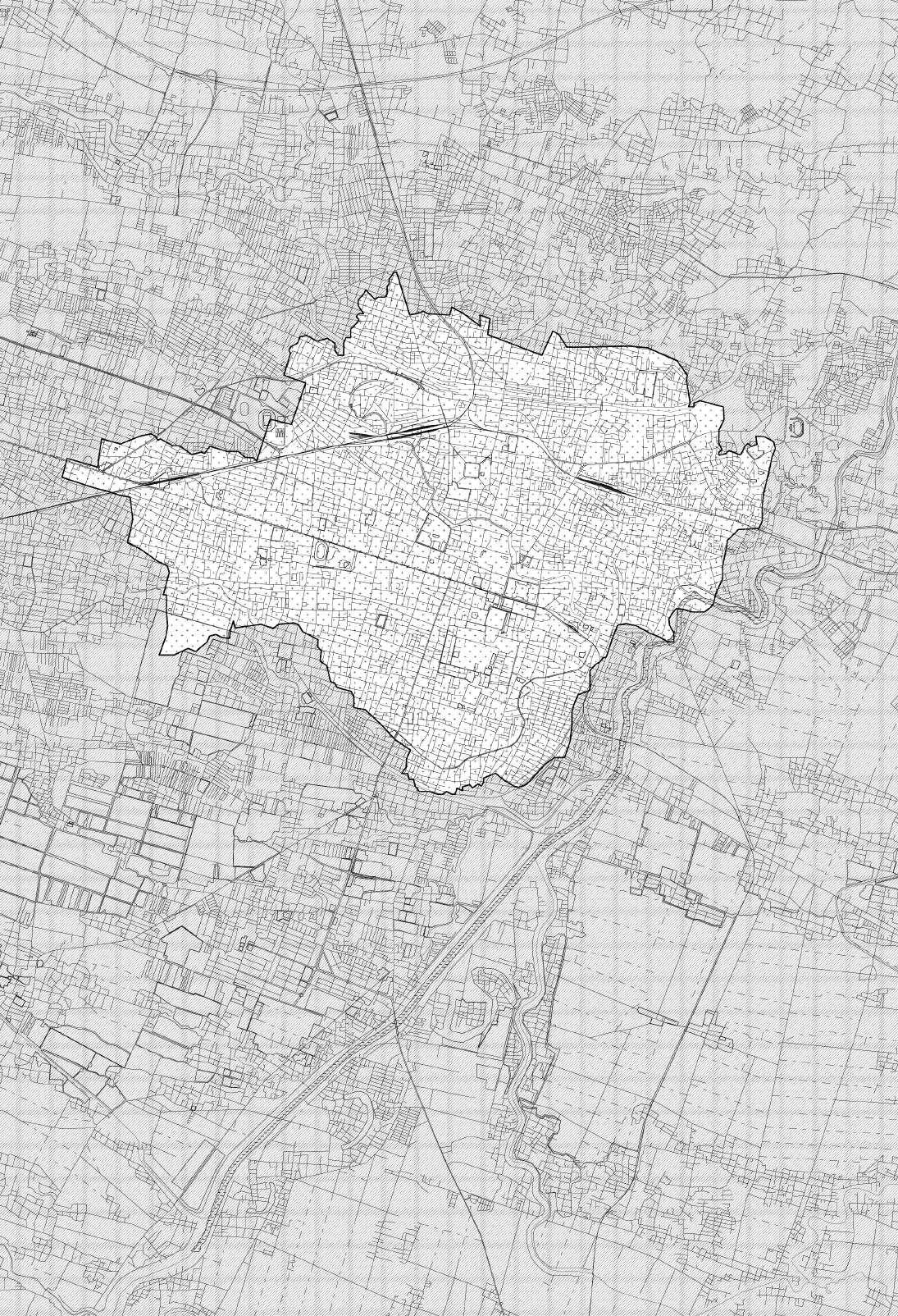
Base Map: Erik’s Previous Masters Studio (17/18)
 Edited by: Siti Nur Farah (2019)
Edited by: Siti Nur Farah (2019)

7.5755° S, 110.8243° E
The city of Surakarta or more commonly known today as Solo, is a city that strives to portray the spirit of Java. It is located in one of the most strategic locations as it is found in the center of Java where all the main transportation network intersects. From the map, Solo forms a triangle with Semarang andYogyakarta, that places it as an important connector.This city has a similar structure to that of Yogyakarta as they were once ruled by the royal family from the Mataram Kingdom. Hence, it has a keraton (a royal palace) which no longer operates today and two alun-alun found on the Northern and Southern side of the keraton.
The fate of the alun-alun, however, has fallen to a mere public space for different functions. The Northern alun-alun has turned into a market and a parking space to accommodate the vendors and sellers who were affected by the fire that destroyed the main market.The space seems to exude a different kind of aura from what is being talked about in texts.What used to be a space that informs of a political power by the royals has turned into a place for the people instead.The quality of the space has definitely took a turn, with the markets covering almost all of the land space.
The Southern alun-alun has now become a permanent night bazaar. This brings up the question on the morphological process of the traditional square found in the different Java cities today. It questions the relevance of the space and how it could be utilised and also the kind of spatial quality that would create a certain type of environment for the construction of the urban fabric in contemporary Java.
 Image: Siti Nur Farah (2019)
Image: Siti Nur Farah (2019)

 Image: Siti Nur Farah (2019)
Image: Siti Nur Farah (2019)

 Image: Siti Nur Farah (2019)
Image: Siti Nur Farah (2019)

 Image: Siti Nur Farah (2019)
Image: Siti Nur Farah (2019)

 Image: Siti Nur Farah (2019)
Image: Siti Nur Farah (2019)

 Image: Siti Nur Farah (2019)
Image: Siti Nur Farah (2019)
7.0051° S, 110.4381° E
Semarang is a coastal city situated in Central Java. It is also the capital of the province in the region.As a city with a sea port, it is no surprise that it has turned into a metropolitan city with fast urban growth. Its strategic location on the north coast connects it between Jakarta and Surabaya, from the West and East Java. It is a city that has undergone major transformations from the colonisation period by the Dutch to its Independence in 1945 and present day today. One of the icons in this city is no other than the Johar Market that was built by the Dutch engineer himself, Thomas Karsten. This building played an important role and gave an important statement as a metropolitan city.
The location of the Johar Market, the biggest market in Central Java, beside the Johar river makes it all the more strategic, allowing business to thrive and encouraging fast development of the city. In addition to that, the market is located beside the alun-alun, which acts as the core of the city centre and the point in which the city starts to grow. However, the alun-alun in Semarang has long been relocated by their first president since they gained Independence. It served as an important move to create a new identity for the city that strives to leave the colonial history behind them.
Over the past few years, the alun-alun has been degraded to merely a plot of land covered in soil and sand for the locals to set up their street stalls and food carts. It has become a forgotten memory as the new city square slowly displaces it in the people’s memory. Today, people do not really remember that space as how it should be, and some might not even recognise it as the alun-alun of Semarang. Hence, this site will be the focal point of the thesis in discussing the historical leagacy of the space and the means that could be done to provide it with life that may enable the people to recognise it and remain relevant in today’s contemporary period.
 Image: Siti Nur Farah (2019)
Image: Siti Nur Farah (2019)

 Image: Siti Nur Farah (2019)
Image: Siti Nur Farah (2019)

 Image: Siti Nur Farah (2019)
Image: Siti Nur Farah (2019)

 Image: Siti Nur Farah (2019)
Image: Siti Nur Farah (2019)

 Image: Siti Nur Farah (2019)
Image: Siti Nur Farah (2019)

 Image: Siti Nur Farah (2019)
Image: Siti Nur Farah (2019)
7.7956° S, 110.3695° E
The city of Yogyakarta can be understood as the cultural city of Java. It holds the “Special Region of Yogyakarta” title due to the existence of the royals who are still ruling the city today.The bloodline of the royal family can be traced back to the Mataram Kingdom, when Islam first arrived on Javanese lands. The existence of the wide open square situated in front of the royal palace has been kept in its physical form for over many centuries. Even though the space feels like any other ordinary field, this one holds special meanings to the one who knows the deep history of the city.
It contains many myths, stories, historical and cultural backgrounds.This 300m by 265m square can be spotted when one lands in the city via a flight.The prominent plot of land prides itself among the tight urban fabric of the city.Its existence from the ancient kingdoms suggest a kind of value and importance to the people inYogyakarta. It is a fully respected site that informs a kind of control by a higher authority.
The alun-alun inYogyakarta then poses certain questions regarding physical boundaries and the extent of its territory. It becomes a discourse that challenges certain qualities and the way the spaces can be controlled and used by different people. AsYogyakarta continue to grow as a city, more land area is required to build taller buildings which has already started to appear and change the urban fabric and elevation of the city to fit the rising population.
As a result, the remaining open space left in the city may be considered for development purposes.This might change the course of history for the city where traditions has kept the alun-alun to this date. However, the question still remains open.Will the alun-alun then still remain as it is in the future?
 Image: Siti Nur Farah (2019)
Image: Siti Nur Farah (2019)

 Image: Siti Nur Farah (2019)
Image: Siti Nur Farah (2019)

 Image: Siti Nur Farah (2019)
Image: Siti Nur Farah (2019)


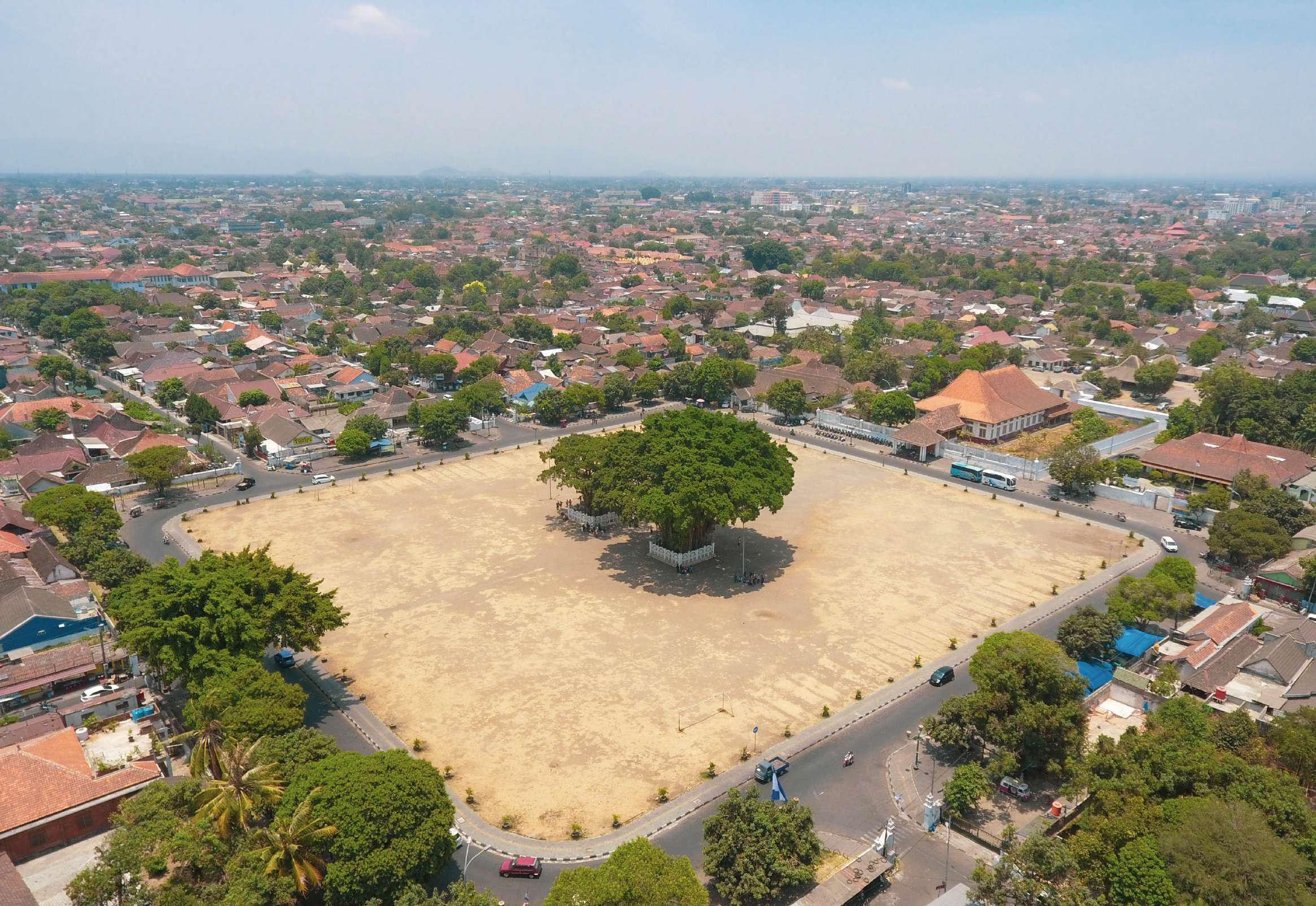
 Image: Siti Nur Farah (2019)
Image: Siti Nur Farah (2019)

 Image: Siti Nur Farah (2019)
Image: Siti Nur Farah (2019)
Foreword
Abstract
Travelogue: Part I
Travelogue: Part II
The Alun-Alun
Site
Design Narrative
Process & Strategies
Work in Progress
Reference
“The Alun-Alun in Yogyakarta at first glance when spotted from the plane felt like an empty field situated in the heart of the city. The flatness of the space was a contrast to the surrounding topography of volcanoes and mountains. It was a peculiar form, standing out from the dense urban settlements. It exudes a grand aura despite its emptiness. The lonely trees planted in the centre, protected by gates, felt really odd yet intriguing. Could this be an important space?
Exploring the region further North into Solo and Semarang opened my eyes to a different perspective of a seemingly familiar experience. Each city has its own Alun-Alun that fell into different fates through history. Fragments of the authentic form are still present but they may not hold the same amount of importance to the city. Or perhaps, they do, but the time for that hasn’t arrived yet.”
The alun-alun in the three Javanese cities in Central Java have morphed and changed into different types of spaces. For instance, Yogyakarta, a state that is still ruled by a Sultan, maintained the alunalun as it is, making it a lasting historical model. On the other hand, the alun-alun in Semarang has been relocated to what is known as Simpang Lima. Today, it is referred as their new city centre located in the downtown area with a similar spatial organisation as the old alun-alun. As a result, the original model was abandoned and left undeveloped. It then became a space for a traditional market to grow due to its strategic location. Lastly, in the city of Surakarta, the alun-alun became a space for a temporary market, with a quadrant of the space being reserved as a parking space. From these examples, it is evident that the alun-alun in each city no longer hold the same level of importance like it used to. If anything, the model of Surakarta’s alun-alun being a temporary market is the result of a shift of meaning that merely recognises the alun-alun as a public open space with no specific meanings and functions. As such, it is allowed to function flexibly, regardless of users. This gives an opportunity for exploration about the relevance of the space today. In addition, it is also critical to define what the alun-alun is, in today’s context and time period.
Hence, it poses a question that challenges the boundary of the alun-alun. To what extent can an open space be labelled as a Javanese city’s alun-alun and what are the determining factors that allow the space to be called the alun-alun? Even though it is widely known from history that an alun-alun is always located in an arrangement involving a mosque, a market and a royal palace, the conditions in present day may have changed. Therefore, there seems to be a need to have a specific definition that grounds the meaning of the alun-alun in today’s contemporary context.



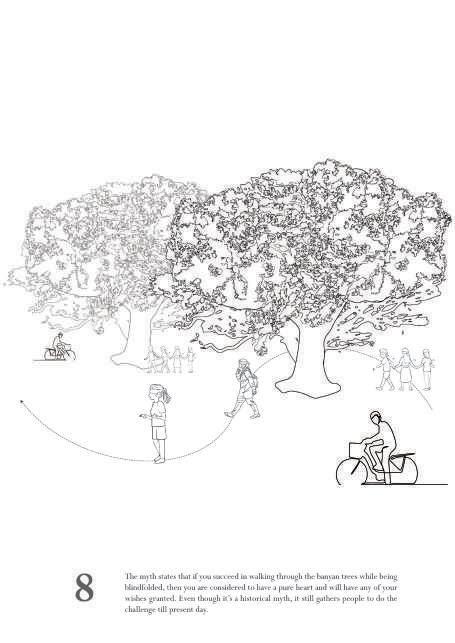






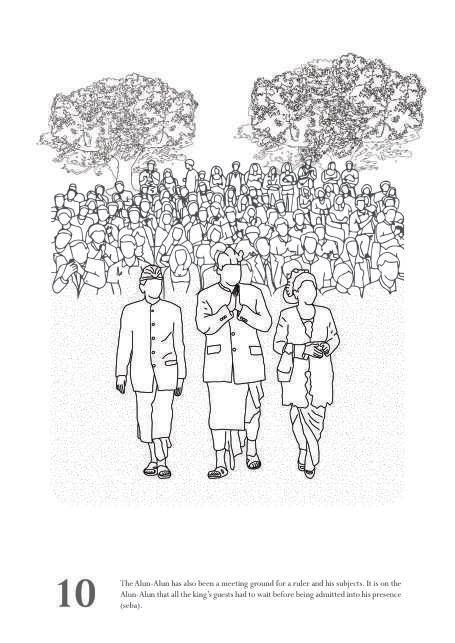
Foreword
Abstract
Travelogue: Part I
Travelogue: Part II
The Alun-Alun
Site
Design Narrative
Strategies & Process
Work in Progress
Reference
The alun-alun was replicated in every Javanese city when the Dutch colonised Indonesia in the late 16th Century, including the city of Semarang. During this time, the alun-alun was placed in front of the Dutch regent’s house.
However, in 1969, the independent state built a new alun-alun towards the South of the city, called Simpang Lima. If you were to ask the locals where the alun-alun is today, they would immediately direct you to this location instead of the original one found beside the Old Colonial Town. The aim of this move was to possibly create a new city center and as a statement that Indonesia is now a free, independent country.
Similarly, the new alun-alun becomes symbolic, almost like the kind of symbolism we see from the trees in the original model. It is an empty space surrounded by traffic, where its role is reduced to a functional roundabout of the city. It loses the porosity, ambiguity and close proximity towards the city. Currently, it sits as a spacer in the city while it loses its strong symbol of power. At the same time, it also becomes an empty symbol.

Foreword
Abstract
Travelogue: Part I
Travelogue: Part II
The Alun-Alun
Site
Design Narrative
Strategies & Process
Work in Progress
Reference
Redefining the 21st Century Alun-Alun in Semarang
The alun-alun is a large open space that is located in front of a royal palace with two peculiar looking trees positioned in the middle of the square. The canopy of the trees is said to resemble an umbrella which means protection, from the royal leaders to his people. Traditionally, the commoners will sit under the hot sun, before meeting the leaders in the palace. But on most days, the alun-alun will remain empty and this has made the space into a symbol of power for the royals. The constant state of emptiness of the alun-alun further emphasise the power the royals have over the space.
When the Dutch colonialised Java in the 1800s, the alun-alun was replicated in other cities such as Semarang. However, in 1969, the alun-alun was moved away from the colonial town towards a new city centre. Today, it is called Simpang Lima, which is the site that I have chosen for my design.
My thesis is a proposal for an alternative form of the alun-alun that is modified and situated in Simpang Lima. My design concept was derived from the state of emptiness of the alun-alun that I had observed during my site visit. Even though the 21st Century has seen major growth and changes across the Indonesian archipelago, the alun-alun still remains as one of the most prominent historical element in any Javanese city. And since the idea of emptiness itself is actually a strong concept that is rooted in the Indonesian culture, my architecture intends to represent it in a different light and in a metaphorical manner that shows simplicity and deep respect for the context of the site. It seeks to alter the symbolism that draws people away due to fear and intimidation, to a symbol that actually draws people closer to it.
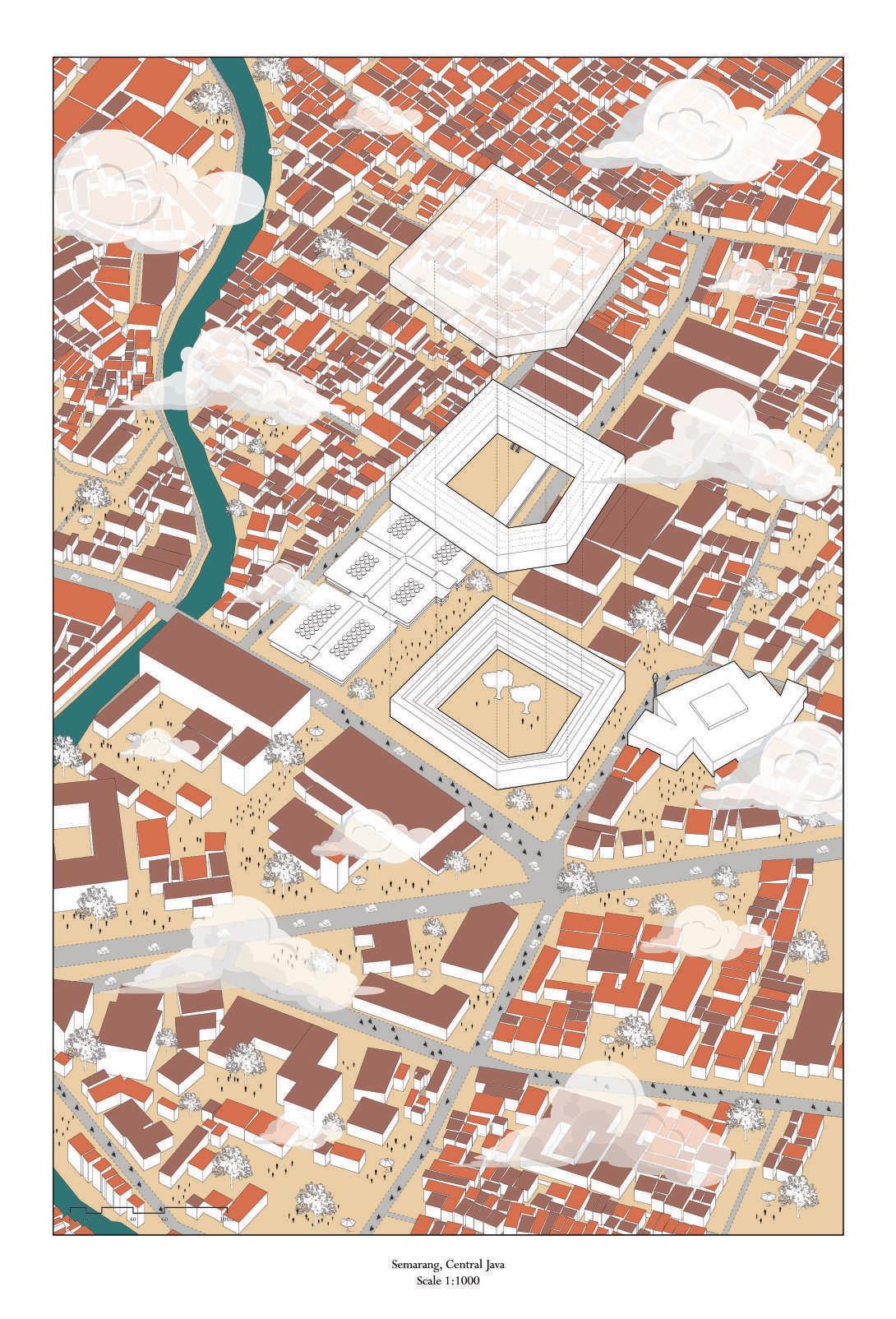
Foreword
Abstract
Travelogue: Part I
Travelogue: Part II
The Alun-Alun
Site
Design Narrative Strategies and Process
Work in Progress
Reference


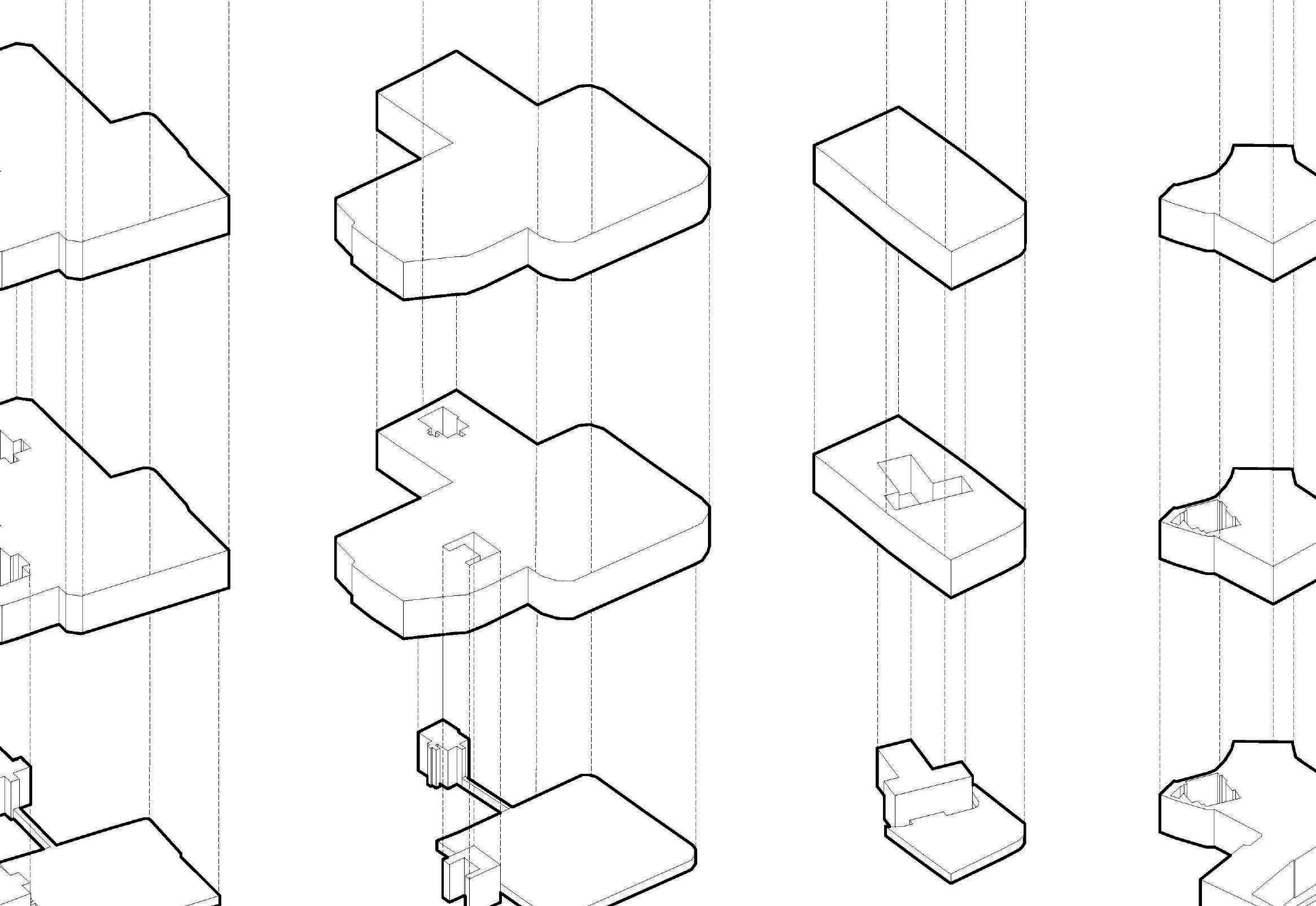






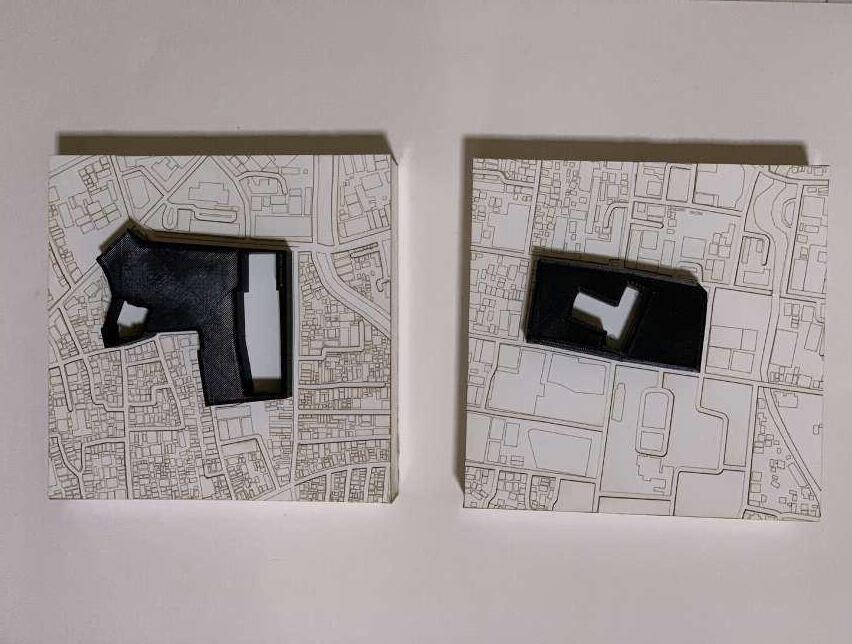

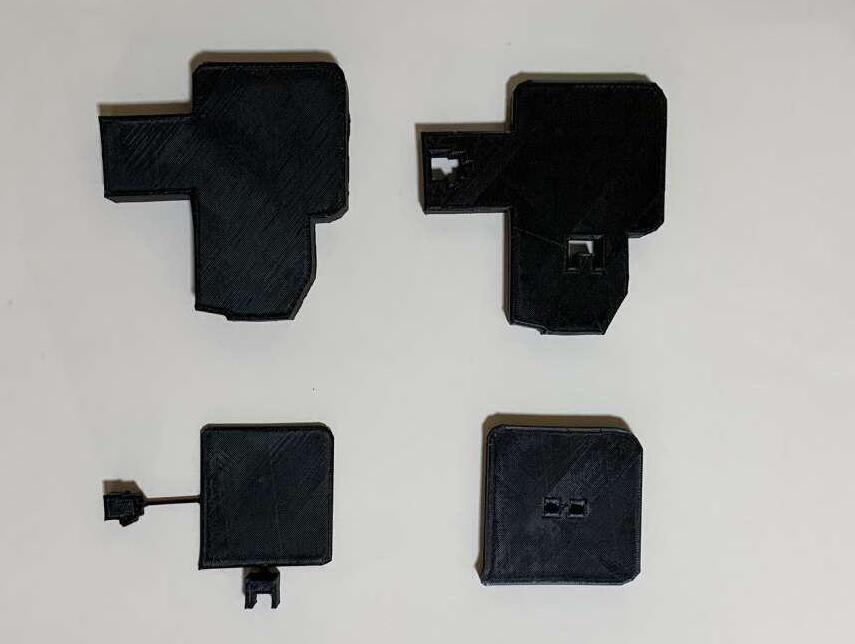



Foreword
Abstract
Travelogue: Part I
Travelogue: Part II
The Alun-Alun
Site Design Narrative
Strategies & Process
Work in Progress
Reference






Preface
Abstract
Travelogue: Part I
Travelogue: Part II
The Alun-Alun
Site
Design Narrative
Strategies & Process
Work in Progress
Reference









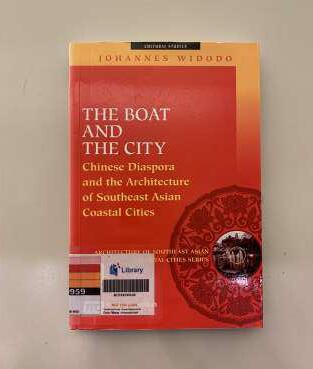










Source: Leiden University Libraries Digital Collections
Alun-AlunSemarang(1900)
Alun-AlunSemarang(1915)


Source: Leiden University Libraries Digital Collections
Alun-AlunSemarang(1910)

Alun-AlunSemarang(1900)

Source: Leiden University Libraries Digital Collections

 Alun-AlunYogyakarta(1900)
Alun-AlunYogyakarta(1894)
Alun-AlunYogyakarta(1900)
Alun-AlunYogyakarta(1894)
Source: Leiden University Libraries Digital Collections
Alun-AlunSurakarta(1915)

Alun-AlunSurakarta(1900)

Aliyah, Istijabatul. “The Roles of Traditional Markets as the Main Component of Javanese Culture Urban Space (Case Study: The City of Surakarta, Indonesia).” IAFOR Journal of Sustainability, Energy & the Environment 3, no. 1 (2016).
https://doi.org/10.22492/ijsee.3.1.06.
Behrend,Timothy E. “Kraton and Cosmos inTraditional Java.”Archipel 37, no. 1 (1989): 173–87.
https://doi.org/10.3406/arch.1989.2569.
Colombijn, Fredericus, and Coté Joost. Cars, Conduits, and Kampongs: the Modernization of the Indonesian City, 1920-1960. Leiden: Brill, 2015.
Giddens,Anthony.The Constitution of Society. Cambridge: Polity Press, 1986.
Gunawan, Sunaryo Rony, Soewarno Nindyo, Ikaputra Ikaputra, and Setiawan Bakti. “Colonial And Traditional Urban Space In Java:A Morphological Study OfTen Cities.” DIMENSI (Journal ofArchitecture and Built Environment) 40, no. 2 (January 2013).
https://doi.org/10.9744/dimensi.40.2.77-88.
Habraken, John.The Structure of the Ordinary: Form and Control in the Built Environment. Cambridge, MA: Mit Pr., 2000.
Hall, Kenneth R.“Ritual Networks and Royal Power in Majapahit Java.”Archipel 52, no. 1 (1996): 95–118.
https://doi.org/10.3406/arch.1996.3357.
Hutama, Setiadi David. “A Study of HistoricalTransformation of North Coastal Cities in Java.” Journal of Asian Architecture and Building Engineering 2, no. 1 (2003): 183–90.
https://doi.org/10.3130/jaabe.2.183.
Hobsbawm, E. J., andT. O. Ranger.The Invention ofTradition. Cambridge: Cambridge University Press, 2017.
Jessup, Helen. “Dutch ArchitecturalVisions of the IndonesianTradition.” Muqarnas 3 (1985): 138.
https://doi.org/10.2307/1523090.
Kohori,Takako,Akhmad Arifin Hadi, and Katsunori Furuya. “The Spatial Composition Of Alun-Alun On Java IslandToday.”Tataloka 21, no. 2 (2019): 204.
https://doi.org/10.14710/tataloka.21.2.204-215.
Lim, Merlyna, and Rita Padawangi.“ContestingAlun-Alun: Power Relations, Identities and the Production of Urban Space in Bandung, Indonesia.” International Development Planning Review 30, no. 3 (2008): 307–26.
https://doi.org/10.3828/idpr.30.3.7.
Purwani, Ofita. “Javanese Cosmological Layout as a Political Space.” Cities 61 (2017): 74–82.
https://doi.org/10.1016/j.cities.2016.05.004.
Ricklefs, M. C.A History of Modern Indonesia since c. 1300. Stanford (Calif.): Stanford University Press, 2001.
Rukayah, R. Siti, Bharoto, and Abdul Malik. “Between Colonial, Moslem, and Post-Independence Era, Which Layer of Urban Patterns Should Be Conserved?” Procedia - Social and Behavioral Sciences 68 (2012): 775–89.
https://doi.org/10.1016/j.sbspro.2012.12.266.
Rukayah, R. Siti, and Bharoto. “Bazaar in Urban Open Space as Contain and Container Case Study: Alun-Alun Lama and Simpang Lima Semarang, Central Java, Indonesia.” Procedia - Social and Behavioral Sciences 50 (2012): 741–55.
https://doi.org/10.1016/j.sbspro.2012.08.077.
Rukayah, Siti, Puguh Dhanang Respati, and Setiyorini Endang Sri Susilo. “Morphology ofTraditional City Center in Semarang:Towards Adaptive Re- Use in Urban Heritage.” Environment-Behaviour Proceedings Journal 1, no. 4 (July 2016): 109.
https://doi.org/10.21834/e-bpj.v1i4.91.
Rukayah, R. Siti, Dhanang Respati Puguh, Endang Sri Susilo, and Mohammad Sahid Indraswara. “Local Wisdom of The Native Settlement as A Main Gate in The Northern Axis of Javanese City Center In Semarang.” IOP Conference Series: Earth and Environmental Science 152 (2018): 012032.
https://doi.org/10.1088/1755-1315/152/1/012032.
Rukayah, R. Siti,Totok Roesmanto, and Sukawi. “The Sustainability Concept of Alun-Alun as a Model of Urban Design in the Future.” Procedia - Social and Behavioral Sciences 85 (2013): 626–37.
https://doi.org/10.1016/j.sbspro.2013.08.390.
Susanti, W.D., D. Agustin (2017) Identification of Catur Gatra Tunggal Concept at Alun-Alun Malang Today’s. International Seminar Research Month Science and Technology in Publication, Implementation and Commercialization. NST Proceeding. Pages 316-321.
https://doi: 10.11594/nstp.2018.0147.
Whittington, Richard.“Giddens, StructurationTheory and Strategy as Practice.” Cambridge Handbook of Strategy as Practice, n.d., 145–64.
https://doi.org/10.1017/cbo9781139681032.009.



In the name of Allah,The Most Gracious,The Most Merciful.
All praises and thanks belong toAllah, God of the worlds. May Peace and salutations of Allah be on the leader of all leaders, the pride of all of creation, our Beloved Prophet Muhammad (Peace Be Upon Him) and on his family, companions and all those who follow in their footsteps in excellence.
This volume is the product of the concept and design explorations that was done throughout the semester. The processes before arriving to the final design of the thesis seeks to provide a better understanding and a refined direction for the final output.
To my family members, especially my mother, thank you for your unwavering support throughout my final year.Your love for me for the past 24 years and all the prayers that you sent to Him are the reasons that I am where I am today.
I would like to thank Associate Professor Erik L’Heureux for his guidance and knowledge from the day I first embarked on my thesis journey. Thank you for always giving us the push we needed and for having confidence in our work.
To myTeh Beng Squad - Amanda and Fawwaz - thank you for always giving me the motivation when I was at my lowest.The both of you have helped me in so many ways and I am immensely thankful to have companions like you to go through the thesis journey together.
Finally, this thesis is dedicated to my late father whose love has been keeping me going through all the critical times during this period. I hope you’re proud of where I am today.This piece is for you.
Design Narrative Poetics of Emptiness
Poetics of Emptiness
Site Plan
Axonometric Drawing
Worm’s Eye Drawing
Sectional Perspective
Visuals
Renders
Design Process
Process Drawings
Idea Exploration
Process Models
Concept Models
Site Model
Precedent Study
Case Studies
Design Narrative Poetics of Emptiness
Visuals
Design Process
Process Models
Precedent Study
Redefining the 21st Century Alun-Alun in Semarang
A few months ago, I embarked on a journey along the equatorial belt to Central Java and visited three cities – Yogyakarta, Surakarta and Semarang that were all rich in culture and history and I came across a prominent space that was present in all, yet unique in their respective city. This space is called the Alun-Alun.
The alun-alun is a large open space that is located in front of a royal palace with two peculiar looking trees positioned in the middle of the square. The canopy of the trees is said to resemble an umbrella which means protection, from the royal leaders to his people. Traditionally, the commoners will sit under the hot sun, before meeting the leaders in the palace. But on most days, the alun-alun will remain empty and this has made the space into a symbol of power for the royals. The constant state of emptiness of the alun-alun further emphasise the power the royals have over the space.
When the Dutch colonialised Java in the 1800s, the alun-alun was replicated in other cities such as Semarang. However, in 1969, the alun-alun was moved away from the colonial town towards a new city centre. Today, it is called Simpang Lima, which is the site that I have chosen for my design.
My thesis is a proposal for an alternative form of the alun-alun that is modified and situated in Simpang Lima. My design concept was derived from the state of emptiness of the alun-alun that I had observed during my site visit. Even though the 21st Century has seen major growth and changes across the Indonesian archipelago, the alun-alun still remains as one of the most prominent historical element in any Javanese city. And since the idea of emptiness itself is actually a strong concept that is rooted in the Indonesian culture, my architecture intends to represent it in a different light and in a metaphorical manner that shows simplicity and deep respect for the context of the site. It seeks to alter the symbolism that draws people away due to fear and intimidation, to a symbol that actually draws people closer to it.

Design Narrative Poetics of Emptiness
Visuals
Design Process
Process Models
Precedent Study




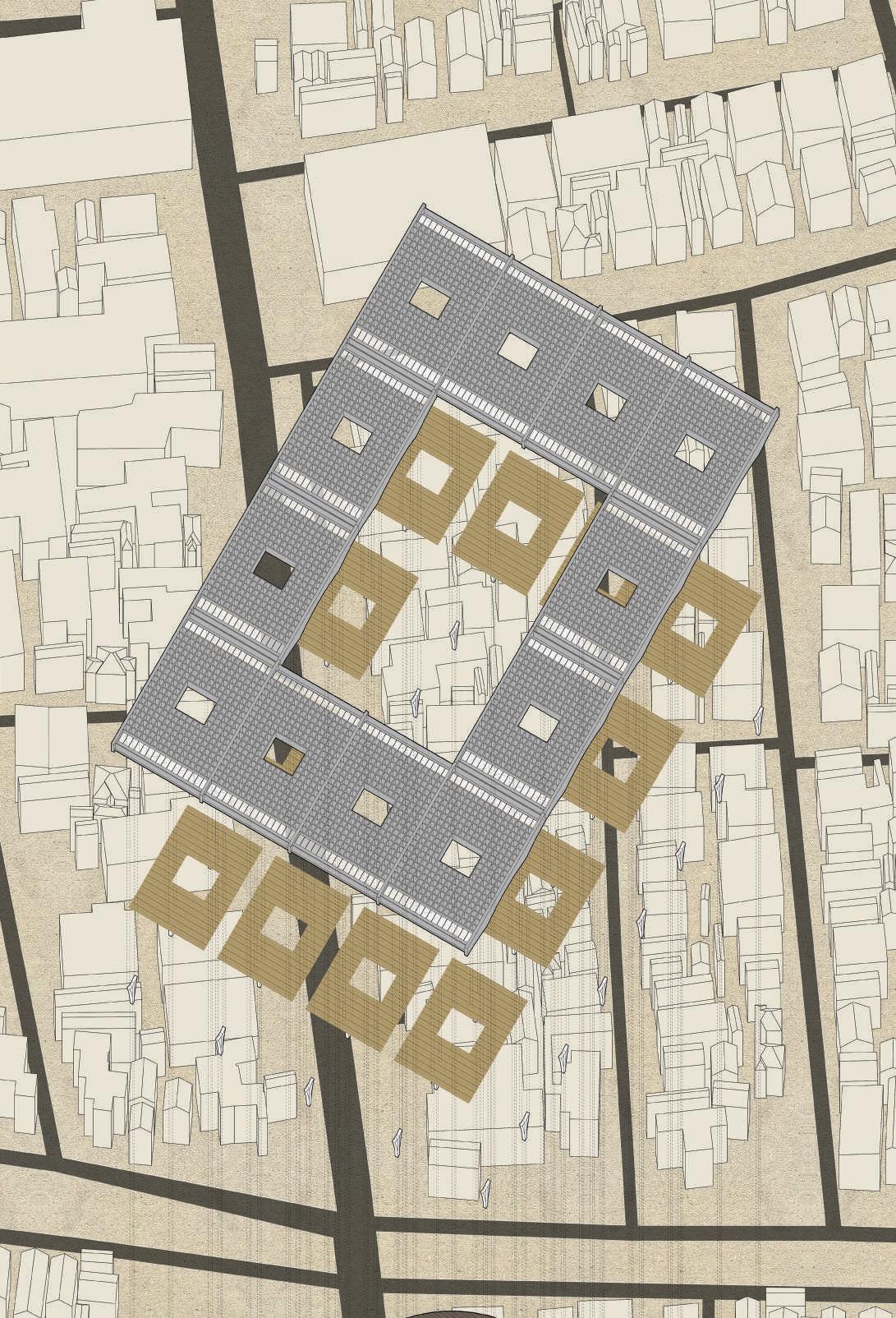
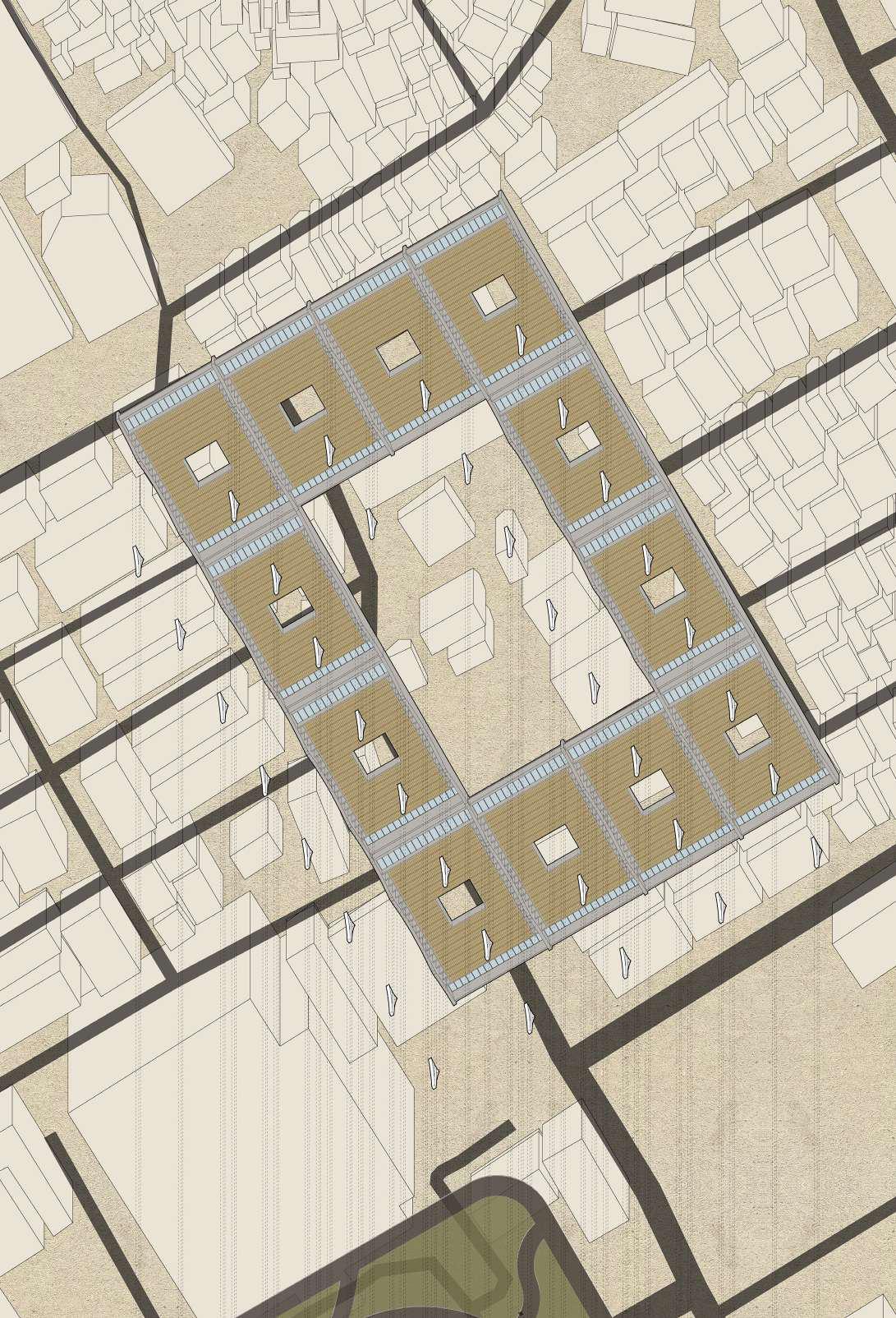










Design Narrative Poetics of Emptiness
Visuals
Design Process
Process Models
Precedent Study






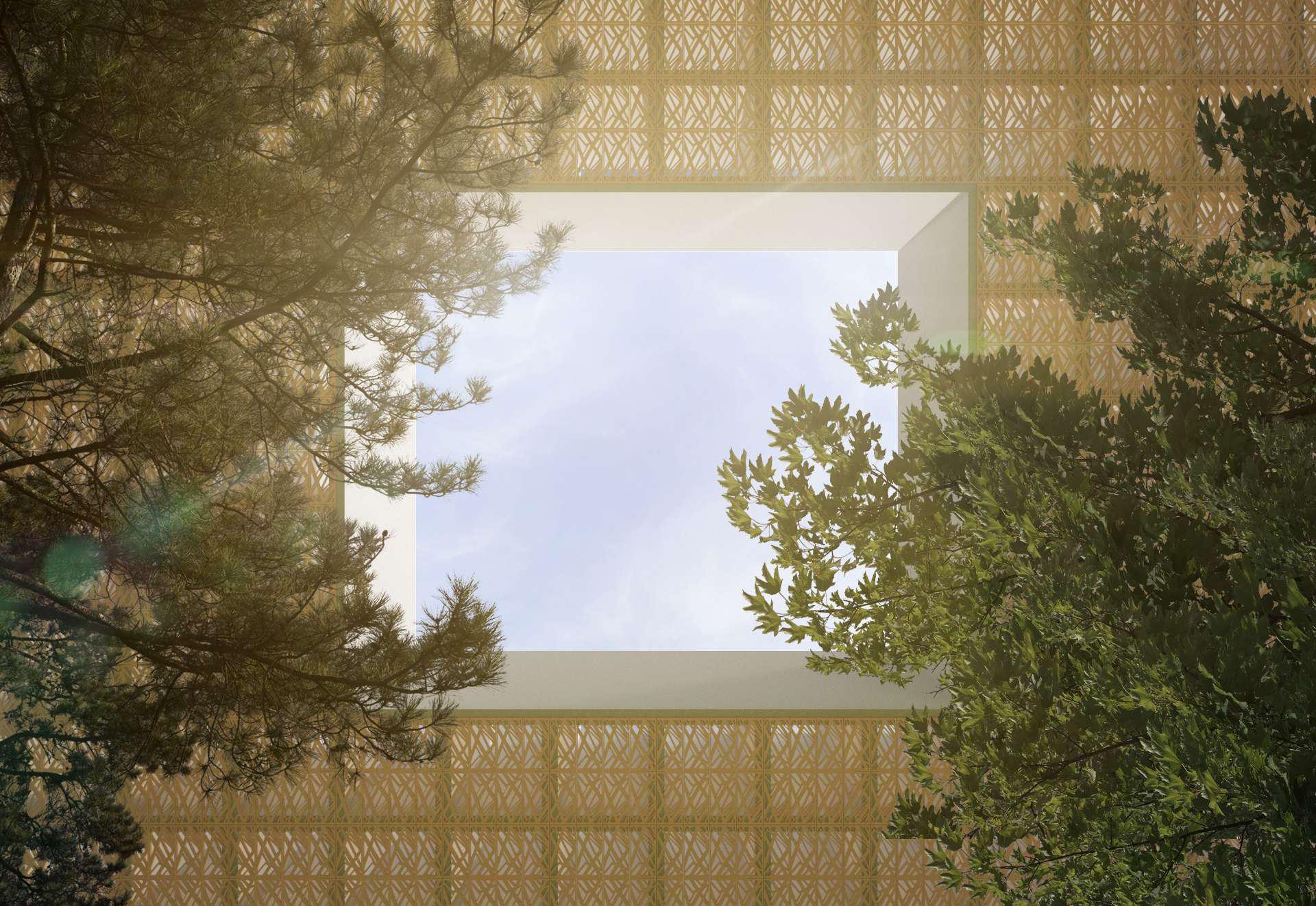

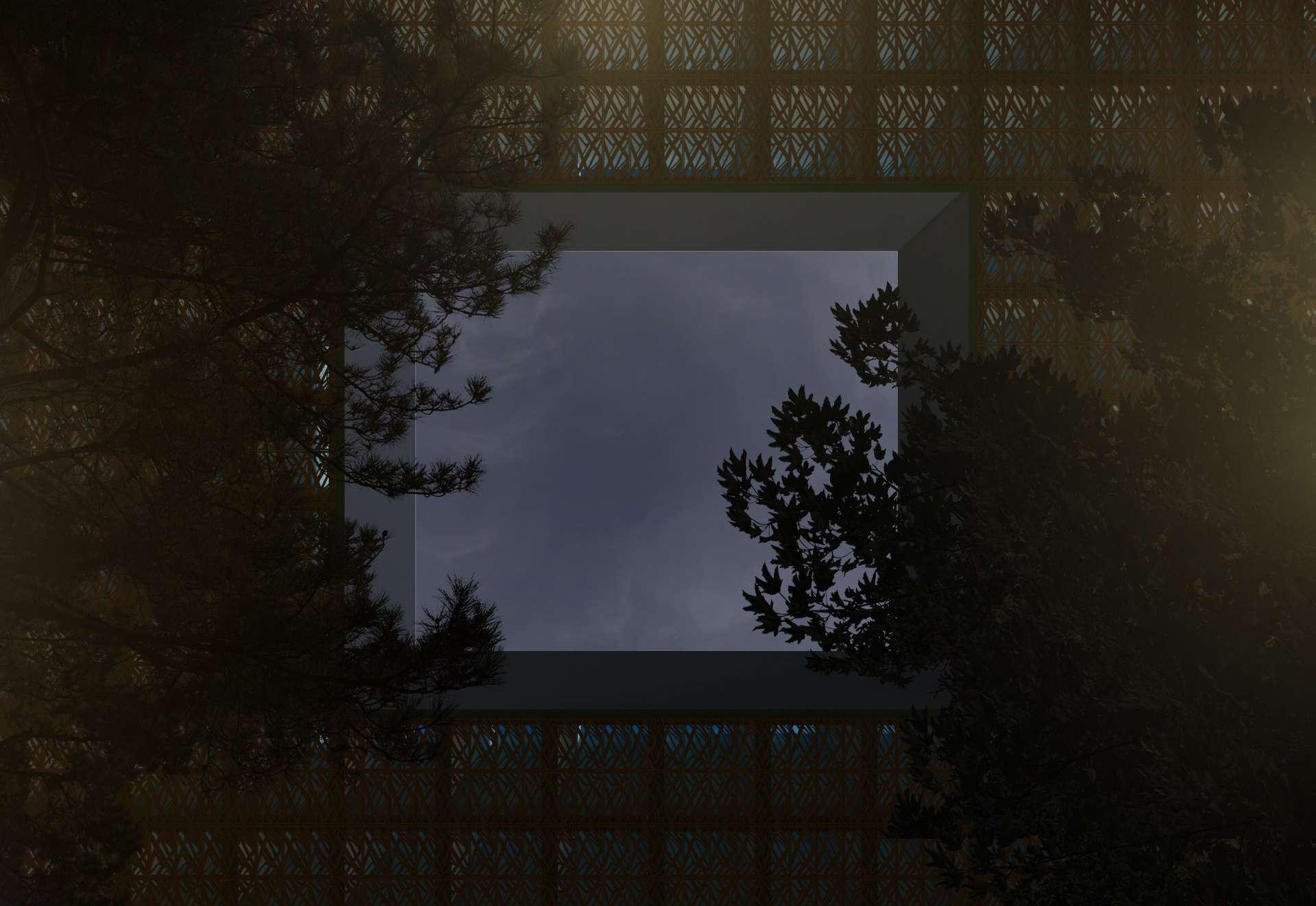










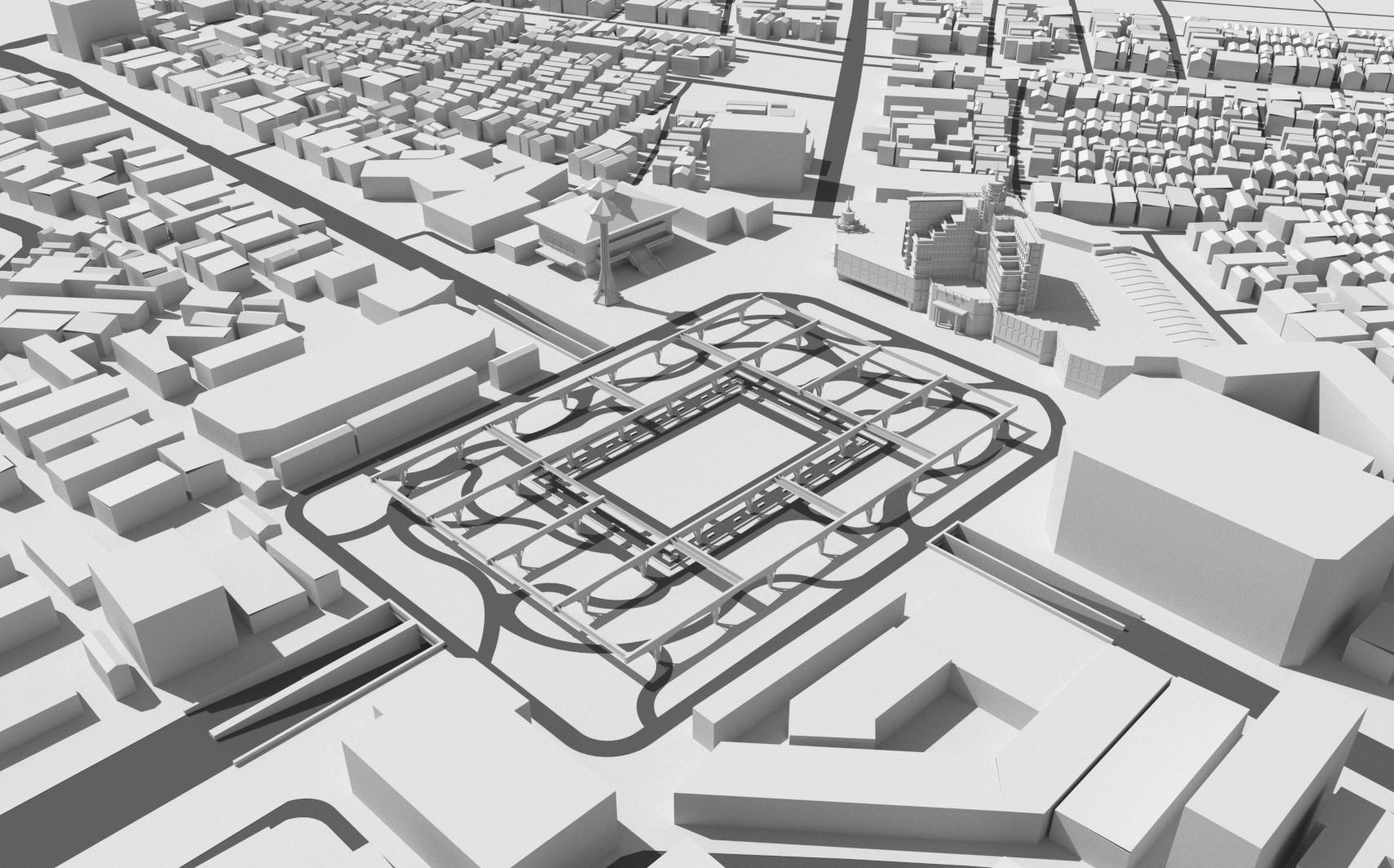




Design Narrative Poetics of Emptiness
Visuals
Design Process
Process Models
Precedent Study
The following images are some of the process drawings done as part of the design process before reaching the final design of the thesis.The drawings serve as a testing point for different types of representational techniques. The different iterations primarily focused on the roof perforation design and the landscape plan.
The final design seeks to create a new model or protoype of the alun-alun in Semarang that addresses the climatic conditions of the city. Hence, some studies of wind flow and solar radiation was done in order to achieve a design that is able to create a more hospitable condition of the space during the day.









 Exploded axonometric showing the different layers of the design
Exploded axonometric showing the different layers of the design
Worm’s eye axonometric with breeze diagram





The initial idea of the thesis stems from the author’s own definition of the alun-alun - a formless void that draws meaning from its relationships with the surrounding environment. Hence, the concept of boundary was explored in order to create a new edge of the alun-alun in Simpang Lima, Semarang.
The main idea was to activate the edge of Simpang Lima by bringing the present traffic underground which creates a pedestrianised space around the site. This move then presents itself as an act that erodes the boundary between the alun-alun and the people. In addition, it brings the alun-alun to a new position that sits on the same plane as the city.



The removal of the traffic from the previous idea removes the intangible boundary between the alun-alun and the city as an object that reads the alun-alun in a different manner. As a result, the alun-alun evolves into a giant roof that houses an underground traffic.Therefore, there are two different layers to the alunalun - below ground and above ground.
The idea that was being explored here was to create an accessible urban parkspace that is seamless with the various programmes situated around the site.The strategy used was to have an urban plaza located in a centralized position, located in between the two different levels. It aims to maintain the accesibility of the alun-alun, both physically and visually, to the pedestrians and vehicles. It strives to remove the symbolism of power ingrained in the alun-alun into a space that symbolises inclusivity for everyone in the city.





Based on the two initial ideas, the design was lacking clarity in terms of its direction and approach. Hence, the position of the alun-alun was looked into again, to gather a more solid concept for the final design. In this final idea exploration, the concept of emptiness of the alun-alun serve as the starting point for the design exploration.The emptiness of the alun-alun in the past becomes a symbolism of power of the space. The fear and intimidation of being on the grounds of the alun-alun deters people from using it, hence, leaving it empty on most days.
Hence, the concept for the design of the 21st Century Alun-Alun tries to celebrate the idea of emptiness while giving the local people comfort in using the space. It seeks to change the perception of emptiness due to fear into an emptiness that gives comfort from the hustle of the city life. Several design strategies were then explored to give the intended ambience.
The first strategy was the use of tensile structures. The lightness of the material and flexibility allows for the creation of various pavilion forms. However, due to the scale of the site, the overall visual of the alun-alun became congested which went against the design concept. After several studies, the concept of emptiness was then achieved using a structural system referenced from the “Brazilian Pavilion” by Paulo Mendes in the 1970 Osaka Expo.
Process elevations





Design Narrative Poetics of Emptiness
Visuals
Design Process
Process Models
Precedent Study












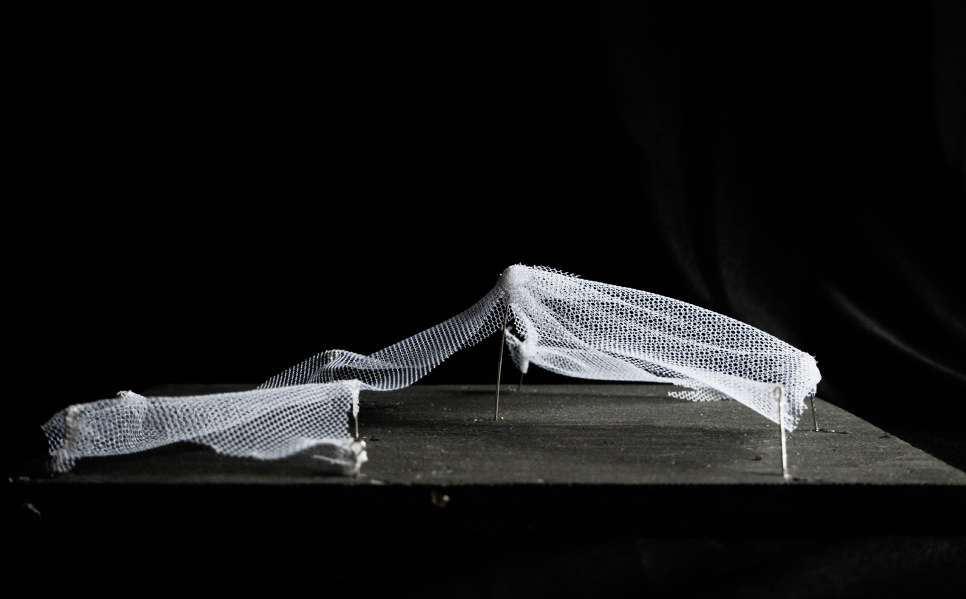





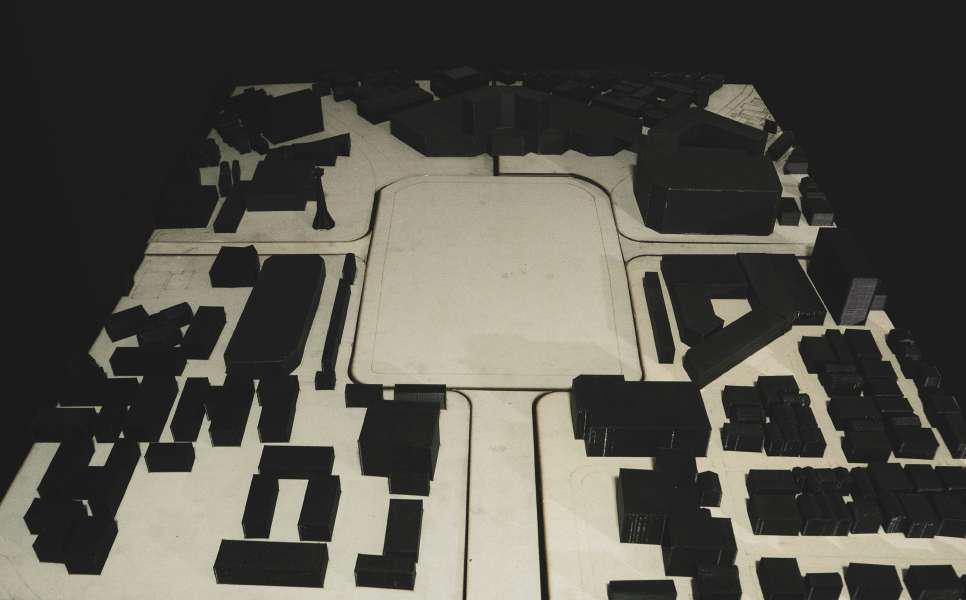

Design Narrative Poetics of Emptiness
Visuals
Design Process
Process Model
Precedent Study
Image: https://www.architectural-review.com/buildings/brazilian-pavilion-osaka-expo-by-paulo-mendes-da-rocha/10044818.article
Image: https://www.architectural-review.com/buildings/brazilian-pavilion-osaka-expo-by-paulo-mendes-da-rocha/10044818.article



Image: https://www.archdaily.com/895626/sunyata-the-poetics-of-emptiness-the-indonesian-pavilion-at-the-2018-venice-biennale
Image: https://www.archdaily.com/895626/sunyata-the-poetics-of-emptiness-the-indonesian-pavilion-at-the-2018-venice-biennale

Image: https://theculturetrip.com/europe/spain/articles/a-history-of-sevilles-plaza-de-espana-in-1-minute/

Image: https://www.overflightstock.com/media/48e1385b-e1ad-4934-ab6d-3a8a7c68a031-aerial-view-of-the-parque-de-maria-luisa-andthe-plaza-de-espan



Image: https://www.archdaily.com/896460/confluence-park-lake-flato-architects
Image: https://www.archdaily.com/896460/confluence-park-lake-flato-architects


Image: https://www.architonic.com/en/project/aidlin-darling-design-windhover-contemplative-center/5103570
Image: https://www.architonic.com/en/project/aidlin-darling-design-windhover-contemplative-center/5103570


Image: https://medium.com/@nghinghiem04/model-and-scale-foa-yokohama-terminal-paper-model-1994-3145720-94d2cd28c1f
Image: https://medium.com/@nghinghiem04/model-and-scale-foa-yokohama-terminal-paper-model-1994-3145720-94d2cd28c1f


Image: https://www.designboom.com/architecture/lad-hypnos-sovraparco-hanging-garden-piazzale-loreto-milan-italy-03-13-2019/
Image: https://www.designboom.com/architecture/lad-hypnos-sovraparco-hanging-garden-piazzale-loreto-milan-italy-03-13-2019/

 Image: https://www.stanicanivy.sk/en/a-city-boulevard-and-an-underground-roundabout-how-mobility-and-public-areas-bring-new-life-into-the-nivy-zone/
Image: https://www.stanicanivy.sk/en/a-city-boulevard-and-an-underground-roundabout-how-mobility-and-public-areas-bring-new-life-into-the-nivy-zone/
Image: https://www.stanicanivy.sk/en/a-city-boulevard-and-an-underground-roundabout-how-mobility-and-public-areas-bring-new-life-into-the-nivy-zone/
Image: https://www.stanicanivy.sk/en/a-city-boulevard-and-an-underground-roundabout-how-mobility-and-public-areas-bring-new-life-into-the-nivy-zone/

